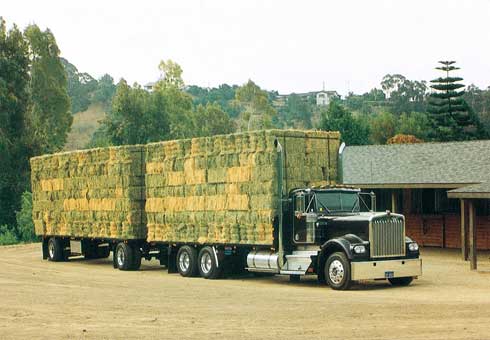Hay Price Relief in Sight
By Staff Report June 25, 2012Anyone who wants to evoke reactions of wincing and pain need only ask about the price of hay. Since 2009, prices have increased an estimated 25-30%, according to a survey of feed store and stable owners, and horsekeepers are feeling the pain.
“Soon developers won’t need to lobby politicians to legislate horses out of Los Angeles; the cost of feeding them and removing the waste has become so onerous that many barns are closing or thinking about it,” Royan Herman, owner of Peacock Hill Ranch in Shadow Hills lamented.
“You can’t just call your hay guy and say ‘send me a load,’ you have to plan ahead and lock it up for the entire year. We’re competing against the Europeans and the Chinese, who are willing to just throw down cash,” Heather Guercio, one of the owners of Damoors, said.
“Prices have gone up a full 15% in the six months prior to March,” added another feed store owner. “In your smaller areas, everyone is backyard farming.”
While many cite overseas demand as the culprit, Seth Hoyt, editor of The Hoyt Report, an Ione, CA-based trade publication that provides hay market analysis of the 11 western farming states, attributes the price hike to other market factors, and said there is some relief on the horizon.
Hoyt said most California alfalfa hay, about 75%, is used to feed dairy cows. “In 2009, dairy had one of its worst years ever and hay prices were very depressed. So hay growers turned to other crops like corn, wheat and cotton. That meant less hay acres in 2010, 2011, and consequently less production, which pushed prices up.”
An East Coast drought also meant West Coast hay was being shipped to Texas and Florida.
While Hoyt conceded there is increased demand from China, which is now building huge dairy herds, he said that’s had minimal impact compared with the domestic factors.
The market has since regained some of its equilibrium, which Hoyt thinks is likely to soften prices for alfalfa, but he foresees grass hay prices not falling as much, due to their increasing popularity among horse owners and the fact that grass is not much used in the dairy world.
An increase in transportation costs has also had its effect. Overall, the past two years have been rough for metropolitan horse owners. Guercio said, however, that while she noticed a decline in the horse population in the earlier part of that period, she has noticed a recent uptick in the number of horses in her environs ―Burbank and surrounding areas.
“People are trying to be creative and save money in other ways. They’ll maybe include some cubes or pellets, but those companies still rely on hay, so if this keeps up they may be affected too.” Guercio said she’s also noticed a willingness to settle for a lower grade of hay, maybe orchard in lieu of timothy, “or buying our grass mix, which comes in smaller bales. It doesn’t really save money, because you’re getting less, but it’s not the same cash outlay.”
While Hoyt said a certain degree of price fluctuation is normal, he doesn’t expect anything as dire as the 2011 shortages to drive the market. Others are not so sure.
“China is very hungry for hay. They are sending all these shipping containers over that typically go back empty. They’re more than happy to fill them with hay,” said one hay broker.
And Herman describes an upward price surge that started in 2009 and has done nothing but gain steam.“In 2008 Peacock Hill paid up to $2,500 for about 26 tons. In 2009 prices jumped without warning to $4,500. By 2010 we were paying $5,500 and in 2011 a load reached $7,800. Two loads ago we paid $9,500, again without warning, and that’s before an 8.5% sales tax the state imposes because horses are identified as companion animals, not livestock.”
Hoyt said prices have fallen in the last three months. “Bermuda hay from the Imperial Valley that was selling off the farm for $280-$290 a ton in February is now at $240-$245; alfalfa, which was about the same price, is $230-240. That’s about a $50 savings, and the way it’s trending it looks like it’s going to soften even more.”
Individual subscriptions to The Hoyt Report start at $119 per year and are available at TheHoytReport.com.
Short URL: https://theequestriannews.com/?p=10943



